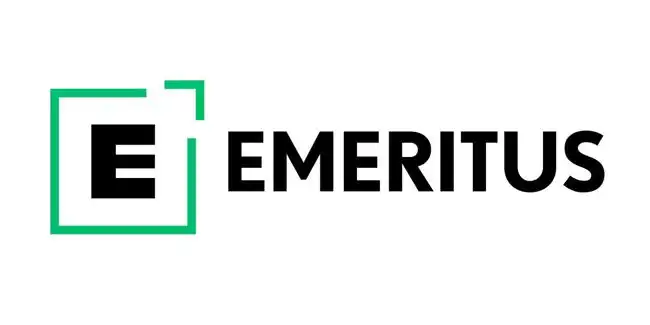When used correctly, you can bring your training material to life by using scenarios in your eLearning courses. As an instructional designer, I’ve seen firsthand how interactive learning tools can help transform learners’ behavior and take their comprehension to the next level.
Scenario-based training offers a fresh and exciting way to learn by allowing users to fully immerse themselves in real-life situations. By using relatable scenarios, learners gain knowledge and insights that are relevant and impactful. Plus, adding interactive features means you get to make decisions and experience the consequences – all while gaining valuable experience.
However, building and scripting these scenarios in eLearning courses can be daunting. If you’re trying to figure out how to implement scenarios into your eLearning design but don’t know where to begin, there are some important steps you can take, like making sure you understand your learning requirements, examining vital situations, and identifying decision points.
In the guide below, I’ll share some steps of successful eLearning script writing and course design for scenario-based training.
How to Implement Scenario-Based eLearning
Step 1: Do your research
Not surprisingly, even before actual planning starts you have a number of concepts in your mind. They might include the target audience and their technical means, complexity and length of the course, and interactivity and compatibility with destination user platforms or interfaces.
In my years as an instructional designer, I’ve learned the importance of validating initial concepts. What seems like a great idea in theory might not align with the practical needs or preferences of your learners.
I recommend engaging with subject matter experts and a sample of your target audience early on. This collaborative approach helps in refining ideas and ensuring that the course content is both relevant and engaging.
Remember, the key is to create scenarios that resonate with learners and facilitate real-world application.
This means considering the complexity and length of the course, as well as how interactive it should be.
Compatibility with user platforms or interfaces is also a critical factor.
In my past projects, I’ve found that aligning these elements effectively can significantly enhance the learning experience.
After all, your ultimate goal is to provide a lasting impression and encourage knowledge retention – so double-check to be sure.
Step 2: Create clear instructional goals
Once you’ve validated your initial idea, the next step is to define clear instructional goals. This is where you determine the scope of your course.
In my experience, it’s essential to focus on the core learning objectives and avoid getting sidetracked by less relevant details. The goal is to create a streamlined, focused script that directly addresses the learning needs of your audience.
Try to benchmark your script against popular project management and marketing concepts with the traditional challenge, solution and results scheme.
Think of your script as a case study, where you distill a complex project into a clear narrative structure: presenting a challenge, offering a solution, and showcasing the results. This approach ensures that your script is not only educational but also engaging and relatable.
Coffee breaks, vacation time, sabbaticals and extracurricular activities don’t matter for now, it’s your hours and results that need sketching out.
You may always keep a generic course script up your sleeve that covers a few tasks or conjectures resolved with specific approaches, and fill it with new content to see if they make a good match.
Over the years, I’ve developed several such templates, which have proven invaluable in quickly shaping new courses. They provide a solid structure that can be adapted to various topics, ensuring consistency and clarity in the learning experience.
Step 3: Translate concepts into context and characters
All scenarios are essentially stories that involve their own settings, protagonists, issues, and solutions.
Since scenario-based training deals with real situations, try to establish authentic cases that will appeal to your audience. Make sure you base content around specific activities and right and wrong choices, and link these situations with preferable results.
Be creative and try it comic-style, with lively dialogues, speech bubbles, and basic personal traits for your most emblematic characters.
Mind mappers and storytelling software will be of great help if you choose to put the pencil and paper aside and make it on-screen from square one.
Step 4: Take a break and put together some sticky notes
After developing a few story and character options, the next step is storyboarding, a crucial phase I always emphasize when offering instructional design tips. This is where you visually lay out the flow of your course.
Stick a couple of dozen notes on a physical surface or make a few clicks in your scenario planning software. I’ve found that this tactile or visual process helps in organizing thoughts and ensuring a logical flow of content.
Does this stuff make a logical sequence? Shuffle, remove, and swap the cards until it does.
Okay, does this split into modules with individual objectives? Not yet? Move on to the next step!
Remember, the goal here is not just to create a sequence of events or activities, but to craft a coherent narrative that guides learners through the material in a way that’s both engaging and pedagogically sound. This step might take some time, but it’s worth it for the clarity it brings to your course structure.
Step 5: Divide the script into sections
It’s time to shape up thematic units derived from initial research and the pre-course background of your audience.
Each piece should deliver a clear, unified message and address a problem.
Your logical fragmentation must be right if you can come up with a one-sentence assessment question and expect a one-sentence answer that captures the core idea.
Otherwise, you might be overinflating some of the modules, or juxtaposing two or more complicated topics.
Step 6: Deliver a prototype
Creating a prototype is an important step of the instructional design process. It’s about bringing your script to life in a tangible, albeit rudimentary, form.
Use a graphic tool like Visio or any other prototyping software to create a quick mockup of your course. This visual representation is crucial for understanding how your ideas translate into an actual learning experience.
Try to get some volunteers for your proof of concept, play the characters, record audio narration, produce basic images and effects – give your partial script some flesh.
The most critical part of this step is gathering feedback. Invite a sample group of learners to interact with your prototype. Listen to their insights and observe their interactions with the material. This feedback is invaluable for making necessary adjustments and improvements.
Final Thoughts
All in all, scenario-based eLearning is a safe and entertaining knowledge-sharing environment that allows for hassle-free practice and learning from one’s mistakes.
Scenario-focused training builds on stories that highlight real-life cases or pertinent examples that help learners emulate the context.
In order to capture the attention of your audience from the very start, it’s key to get a script handy. The backbone of an effective course, the structure should sketch out the pivotal points, interactions and intended emotional response. Make your cases and characters true-to-life and challenges relevant – and start building a rapport with your learners.
If you’re ready to elevate your instructional design career and start creating great eLearning experiences, Emeritus’ Professional Certificate in Instructional Design program has got you covered.
Expand your knowledge in the field with comprehensive training that covers everything from the basics to practical implementation strategies for online learning environments.
Whether you’re just starting out or looking to take your skills to the next level, this course is the perfect fit for you.
Don’t wait any longer to become an expert in instructional design. Enroll now and take the first step toward unlocking your full potential.
You can learn more about the program and request a brochure at this link.
 Emeritus Professional Instructional Design Certificate | Online Certificate Course
Emeritus Professional Instructional Design Certificate | Online Certificate Course
Gain firsthand expertise in instructional design principles and methodologies through this unique Professional Certificate program. Create impactful learning solutions and improve people's ability to learn.



Good advice, thanks! I just see one inconsistency. Looks like there’s a lot of thinking going on in an author’s head before anything emerges on a board or sticky note. Why not start thinking ‘tangibly’ from the very beginning? I’d interchange steps 3 and 2 for that purpose.
Jill, thanks for the input! No, that’s done for a reason. You can’t see the big picture while you are gathering siloed data, so if you verbalize and wipe out seemingly irrelevant thoughts at stage 1 or 2, the odds are you’ll miss out on a big chunk of the plot. So once you’ve decided on the goals, it makes sense to take a break and let the ideas take their course.